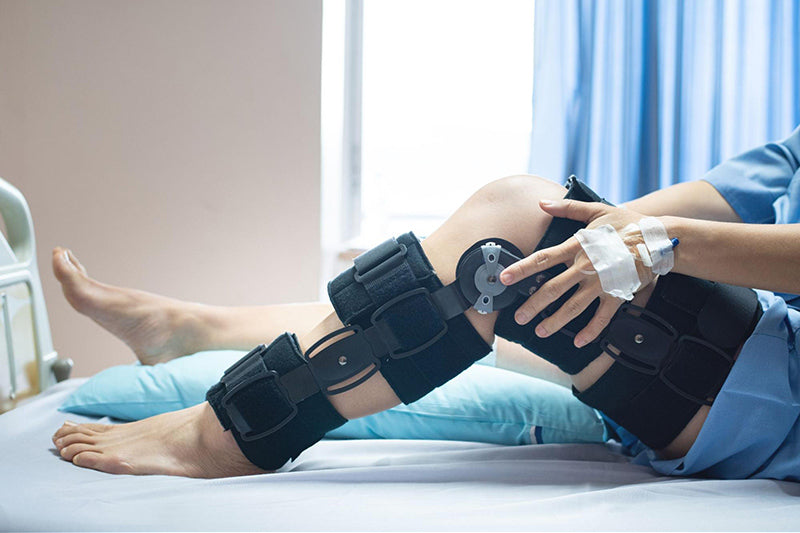
As athletes we’ve been trained to endure some levels of pain, but where is the line between “good” and “bad” pain when practicing myofascial release? In the same way that a runner has to know whether or not to push for one more mile, we need to know when our body is telling us to add pressure during myofascial release and when to back off. The better we are at describing and understanding our experience with pain, the better we’ll be at taking care of our muscles for warm up or recovery.
Is there “good” pain?
Let’s first remember that pain is your body's way of telling you that something is wrong, so the idea that exercise should be painful is a dangerous common misconception. Persistent, intense, or commonly occurring pain is never normal or good and might require intervention from a doctor or specialist, especially if that pain is burning, sharp, shooting, or radiating. What we’re referring to when we’re thinking about normal or good pain might be better described as discomfort.
Does everyone experience pain the same way?
Research confirms that our experiences as they relate to pain or discomfort with soft tissue mobility is unique to each individual. The factors that can affect an individual’s experience during soft tissue release and that can vary levels of pain or discomfort are made up of a variety of factors including1-8:
- Rate of pain or discomfort
- Intensity
- Amount of pressure
- Depth of pressure
- Time of applied therapy/rolling session (single session)
- Duration of applied therapy/rolling sessions (sessions over days/weeks/months)
- Volume of applied pressure
- Speed of application
- Frequency of roll
- Number of treatment applications during one session
- Duration of intervals between applications
Should Soft Tissue Release or Myofascial Release be painful?
We’ve all heard it: “No pain. No gain.” Over the last 20 years, the fitness industry has often implied “pain” is necessary to push the needle forward. While gradually increased fitness regimens of any kind will result in some level of discomfort, pain during exercise and soft tissue work should be a sign to pause and re-evaluate.

So, what level of discomfort should I feel?
If you’ve ever tried to describe your pain at a doctors office, you’re probably familiar with the Perceived Pain Scale which assigns a smiley or frowny face to levels of pain one through ten. A zero or one on the scale is a pleasant smiley face that indicates no pain and a ten is often described as the worst pain you’ve ever felt. When working through releases, it’s best to aim for a four out of ten on the perceived pain scale. At this level you should feel a bit of discomfort that wouldn’t be easily sustained for long periods of time, but your body shouldn’t be screaming at you to stop.
Using the appropriate level of pressure helps you loosen muscles to achieve increased range of motion without negatively affecting performance.9
If you’ve previously subscribed to the idea that more pain equals more gain, we’re here to tell you that when it comes to myofascial release, that’s just not the truth. Research shows that individuals who creep up to and past a six on the Perceived Pain Scale don’t see any additional benefits over those who maintain a four or five pain rating during their release regimen.9, 10

How do I achieve the right level of comfort during myofascial release?
Most release tools rely on gravity or electricity to press into soft tissue for myofascial release which means that you don’t have as much control over the amount of pressure and pain you experience, but MOBO uses leverage meaning you’re able to easily adjust pressure and intensity of your release. With more control over the pressure you put on your soft tissue, you get the optimal release every time you roll out.
Leverage Driven Releases
Releases driven by leverage are the key to experiencing a productive level of discomfort without negatively affecting performance. Give these leverage driven releases a try!
Calf Release - Anchor and Roll
Hamstring - Anchor and Roll
Chest - Press and Move
Glute - Press and Move
Lat - Anchor and Roll
Upper Trap - Press and Move
Head & Neck - Anchor and Roll
T-Spine - Press and Move - Wall
References
- Grabow, L., Young, J.D., Alcock, L.R., Quigley, P.J., Byrne, J.M., Granacher, U., Skrabot, J. & Behm, D.G. (2018). Higher quadriceps roller massage forces do not amplify range-of-motion increases or impair strength and jump performance. J Strength Cond Res. 32(11):3059-3069.
- Stovern, O., Henning, C., Porcari, J.P., Doberstein, S., Emineth, K., Arney, B.E. & Foster, C. (2019). The effect of training with a foam roller on ankle and knee range of motion, hamstring flexibility, agility, and vertical jump height. Int J Res Phys. 15(1): 39-49.
- Sullivan, K.M., Silvey, D.B., Button, D.C. & Behm, D.G. (2013). Roller-massager application to the hamstrings increases sit-and-reach range of motion within five to ten seconds without performance impairments. Int J Sports Phys Ther. 8: 228-236.
- Wilke, J., Niemeyer, P., Niederer, D., Schleip, R. & Banzer W. (2019). Influence of foam rolling velocity on knee range of motion and tissue stiffness: A randomized, controlled crossover trial. J of Sports Rehab. 28: 711-715.
- Behm, D.G., Alizadeh, S., Hadjizadeh Anvar, S., Mahmoud, M.M.I., Ramsey, E., Hanlon, C. & Cheatham, S. (2020). Foam rolling prescription: A clinical commentary. J Strength Cond Res. 34(11): 3301-3308.
- Debski, P., Bialas, E. & Gnat, R. (2019). The parameters of foam rolling, self-myofascial release treatment: A review of the literature. Biomedical Human Kinetics. 11: 36-46.
- Debski, P., Bialas, E. & Gnat, R. (2019). The parameters of foam rolling, self-myofascial release treatment: A review of the literature. Biomedical Human Kinetics. 11: 36-46.
- Curran, P.F., Fiore, R.D. & Crisco, J.J. (2008). A comparison of the pressure exerted on soft tissue by 2 myofascial rollers. J Sport Rehabil. 17: 432-442.
- Cheatham, S.W., Kolber, M.J., Cain, M. & Lee, M. (2015). The effects of self-myofascial release using a foam roll or roller massager on joint range of motion, muscle recovery, and performance: A systematic review. Int J Sports Phys Ther. 10(6): 827-838.
- Myers, T. & Miller, J. (2021). “Rolling Along the Anatomy Trains.” Anatomy Trains and Tune Up Fitness.
https://try.tuneupfitness.com/rolling-along-anatomy-trains-jill-miller-tom-myers.



